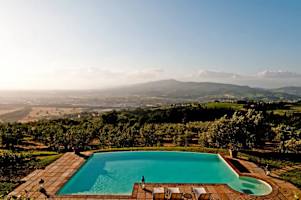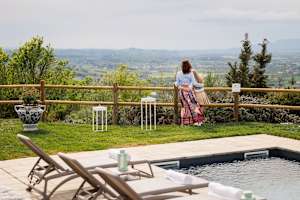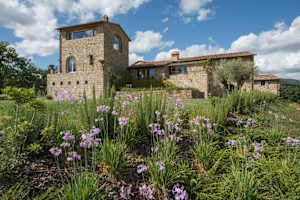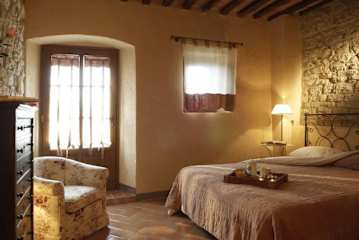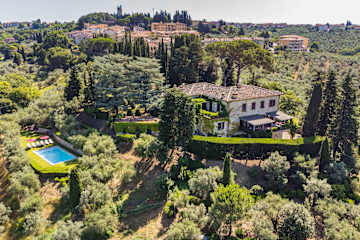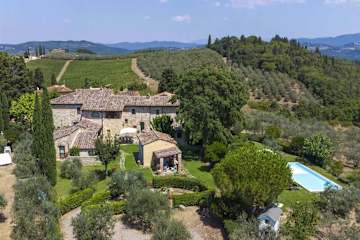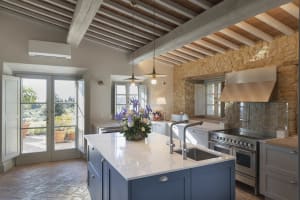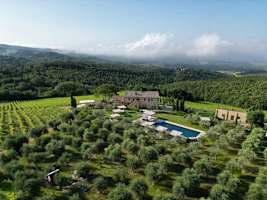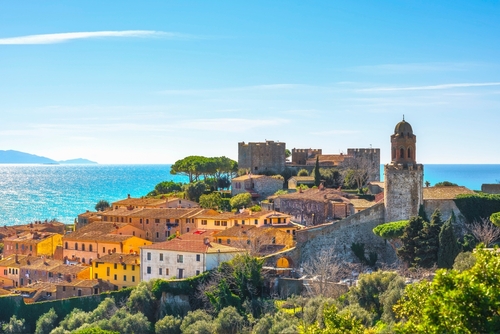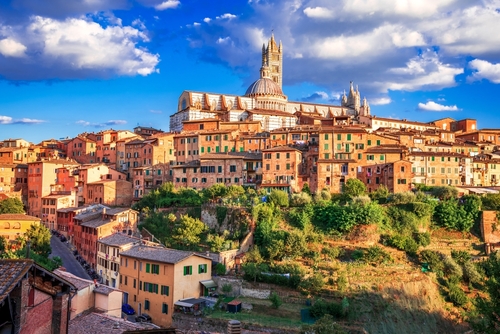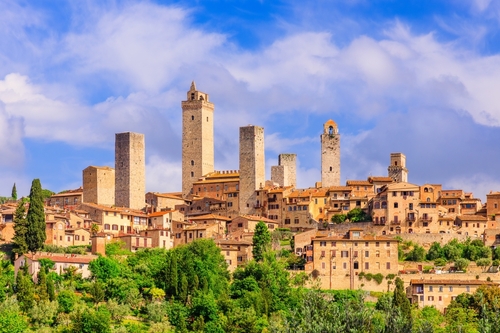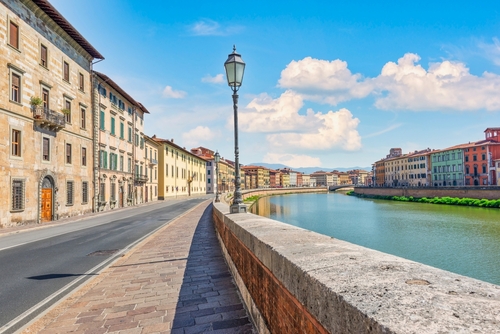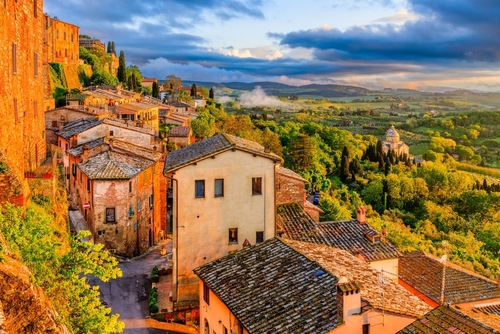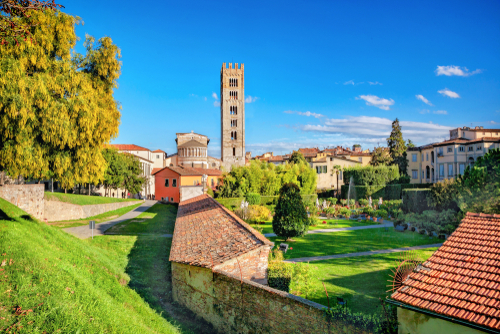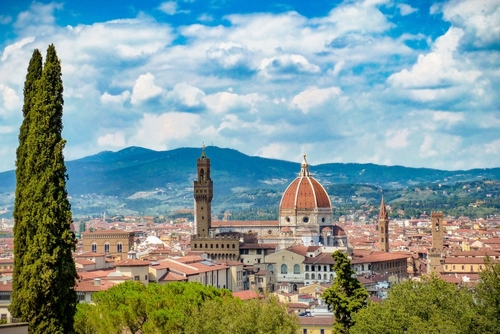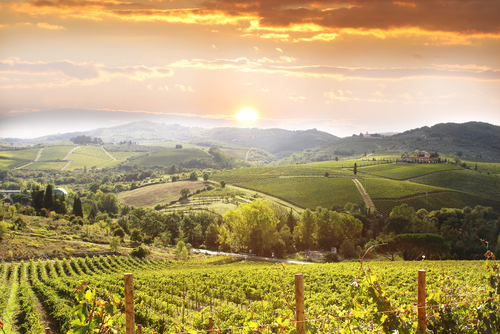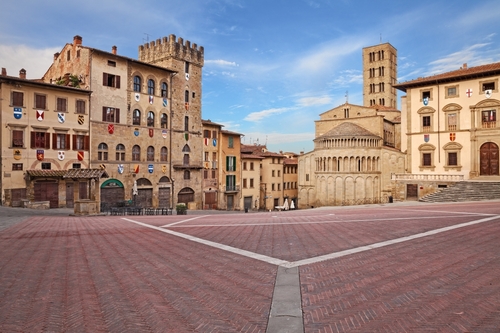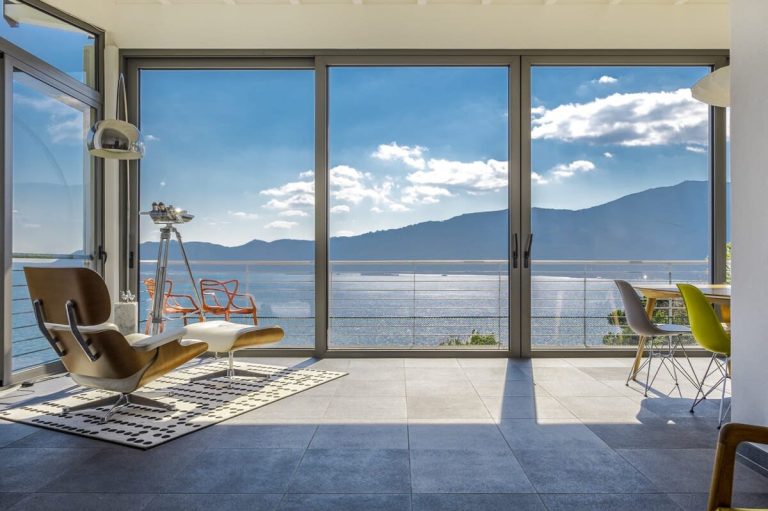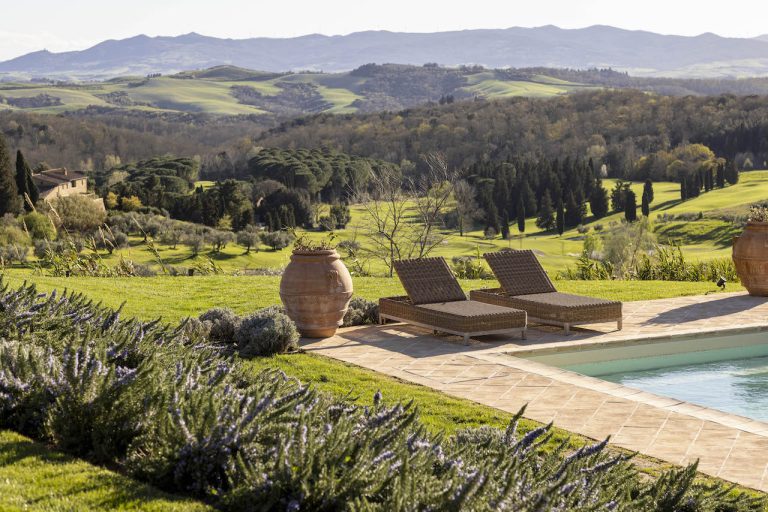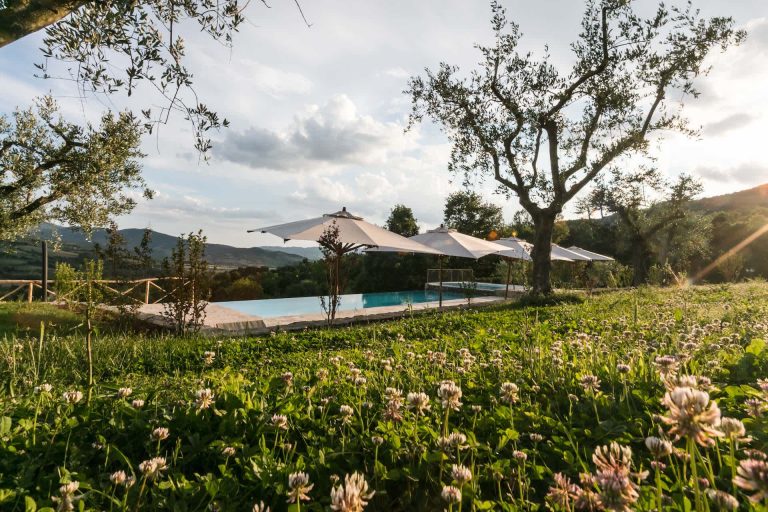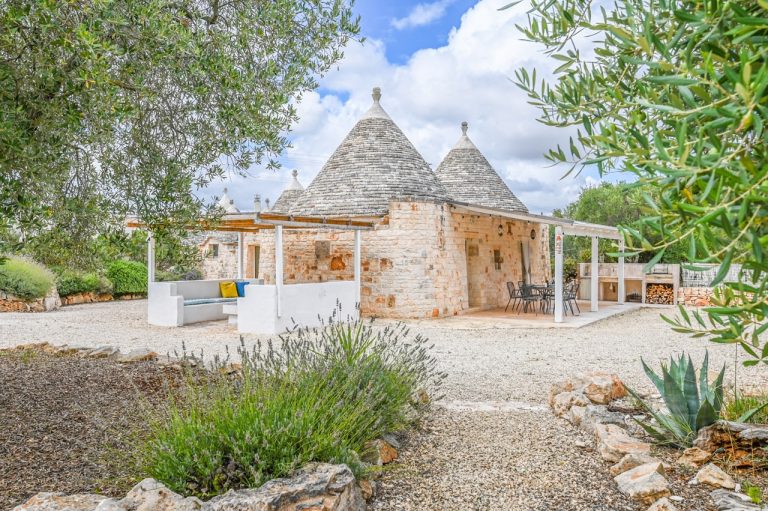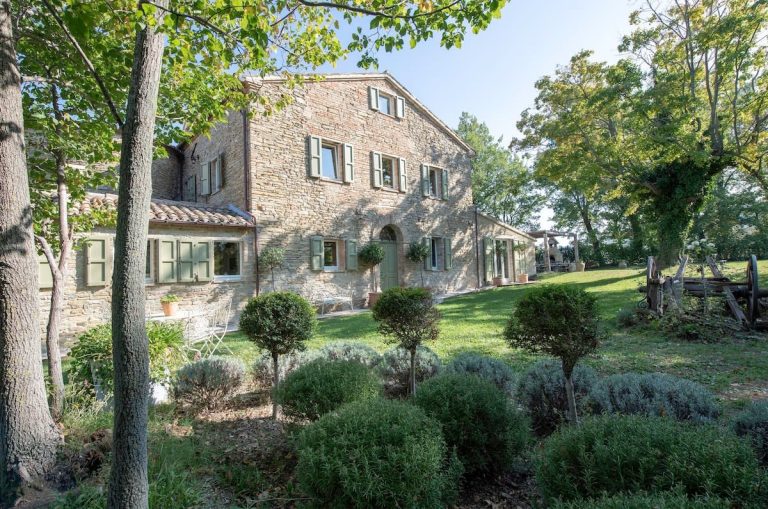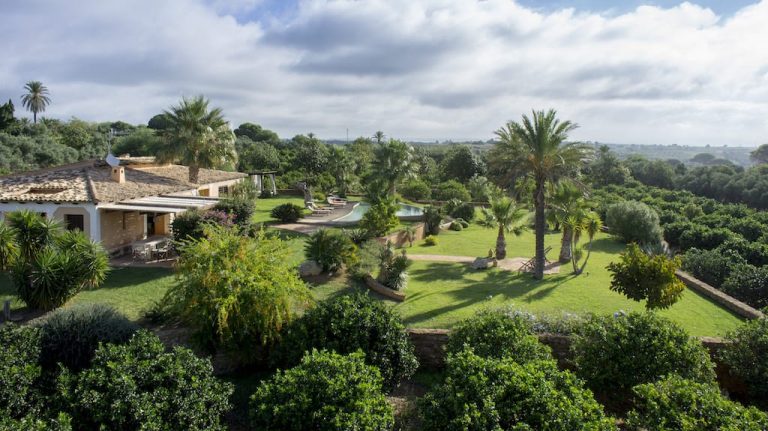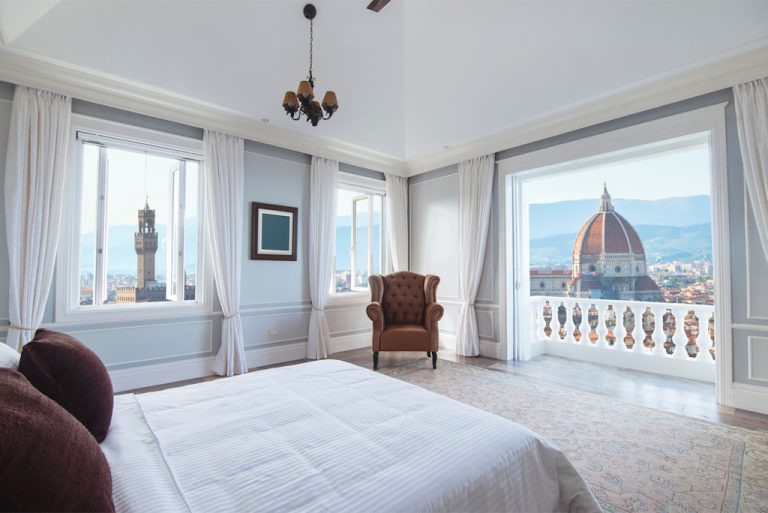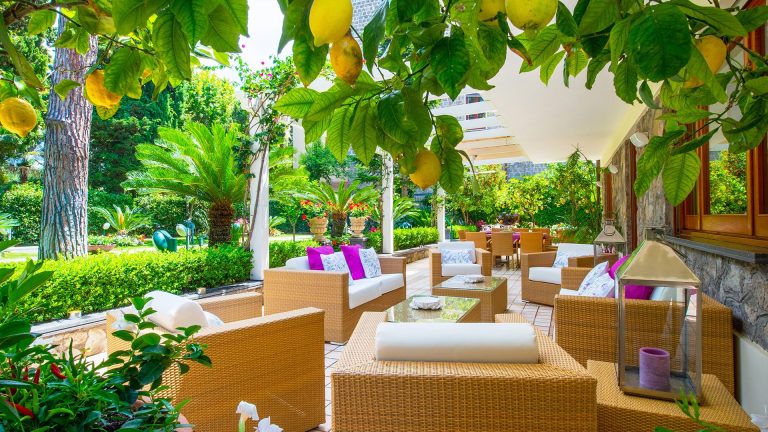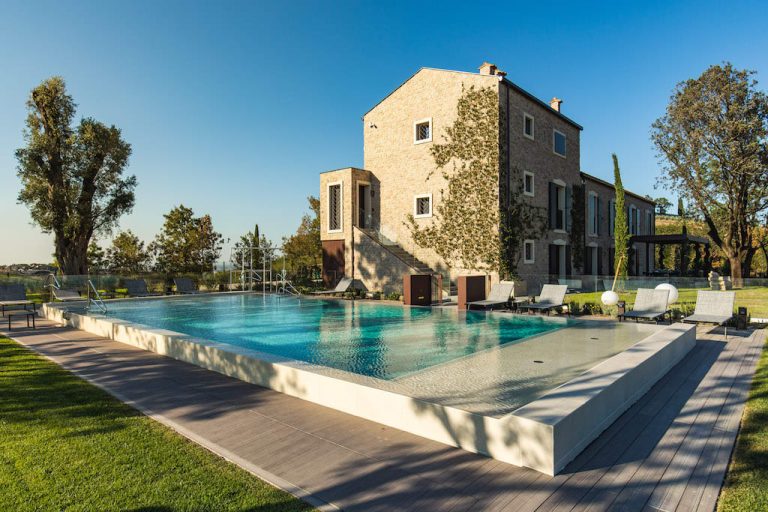Luxury Villas in Chianti
The Chianti region of Tuscany is characterised by gentle rolling hills. It’s awash with a patchwork of award-winning vineyards, verdant olive groves and colourful fields of sunflowers, each dotted with rows of cypress trees. Sitting between Florence and Siena, Chianti is not actually defined by its geography but is actually reference to an Italian DOCG wine produced in seven of Tuscany’s provinces. Marked by Vinci in the west and Rufina in the east, it stretches more than 100 miles from the north to Siena in the south. It’s an incredibly pretty and peaceful part of Tuscany and is home to numerous quintessential, picture-perfect Medieval towns. These attract visitors who can’t fail to be beguiled by their charm.
These Chianti villas are all in the heart of the beautiful Chianti countryside.
Refine and personalise your results
EXCELLENTTrustindex verifies that the original source of the review is Google. Cassina Rossa in Forte Dei Marmi was a perfectly located villa to enjoy all things Forte & truly feel like a local! The communication with the owner and her representatives was so easy and they were VERY helpful with anything we needed during our stay. We so enjoyed waking up every morning and either taking our coffee intown while it was super quiet and watching everything wake up around us or on most mornings we rode the bikes that were supplied to us to the wonderful market that was literally down the street and picked up anything we needed fresh for the day. The kitchen was beautifully equipped and we made espresso most mornings and either sat outside on ground level patio or on the roof top overlooking the mountains. It was comfortable enough to have lunch and dinner at home a couple of times and fun setting a beautiful table with their pretty dishes, linens, etc. Having Bagno Vasco the very authentic classic beach club included was a dream and a big savings! Great food, easy location to bike or drive to and the position of our chairs, umbrella and sunbed right next to the sea was great. We were there for over 2 weeks and for a nominal amount he supplied us with their towels each day so we didn’t have to bring back and forth. The villa’s proximity to the center of town can’t be beat. It’s quiet enough to be a bit removed and beautiful to see the mountains whenever walking or riding home but so close to all the wonderful restaurants & very upscale & unique shops. Forte has such a unique vibe day and night especially on market days (Wednesday and Sunday). The markets are so full of clothing, housewares, etc that you’ll need to bring an extra bag or ship stuff home. People come from everywhere to take advantage of it. The location of Forte Dei Marmi is so central and close to other towns like Pietrasanta up in the hills which allows you to experience a completely different more typically Tuscan area within a short 15-20 min drive and it’s also very close to Lucca, Pisa & Carrara (where they get the marble) only 1 1/2 hours from Florence and Portofino if you are staying longer and want to take some wonderful daytrips. Forte Dei Marmi doesn’t have the dramatic coastline of the Amalfi coast but the beauty of looking one direction and seeing the beaches and looking the other and seeing the stunning mountains including Carrara is truly unique and offers its own special beauty. Another plus is that it is very flat so much easier than many Italian towns to walk and ride bikes which everyone does everywhere. It’s fun to see everyone (mostly Italians which we loved) fully dressed for dinner on bikes as it’s truly the chosen form of transportation for the young and old. We can’t wait to return!!Trustindex verifies that the original source of the review is Google. Jo at Bookings for You is absolutely wonderful to work with. We have booked properties in Sorrento and Sicily over the past two years (2022 & 2024) and have not been disappointed. The properties were 1st class and just phenomenal. Jo lists only the best based on; location, amenities, condition & cleanliness. I highly recommend Bookings for You when planning & booking your stay in Italy; you won't be disappointed. First class service and first class properties!Trustindex verifies that the original source of the review is Google. Great service , prompt and efficient responses to enquiries . Villa was just what we wanted for a family holiday , and Fiona was a great asset ! ThanksTrustindex verifies that the original source of the review is Google. We have just spent a fabulous week in Villa Speracedes booked with Bookings for You. Bookings for You provided excellent communication with us both prior to and during the trip to ensure that everything ran as smoothly as possible for us. The apartment was great: comfortable, very well equipped and the terrace was fabulous with a seating area for meal times, comfortable loungers to relax on and down the steps, loungers beside the pool. All having magnificent views across the valleys. Highly recommended!Trustindex verifies that the original source of the review is Google. Fabulous stay in Villa Assisi - a big villa with private pool in a hotel resort complex. It was very peaceful, despite a very central location, and the pool was a fantastic luxury given the super-hot temperatures. We were able to use the hotel facilities, such as the tennis court and bicycles, as well, so it felt like the best of both worlds. We were well looked after by Bookings for You too. Highly recommended.Trustindex verifies that the original source of the review is Google. An amazing place. Had such a great stay with my family and the hosts were so helpful all along. Thank you!Trustindex verifies that the original source of the review is Google. The villa is Beautiful. The staff wonderful especially the chef and Benne. Daniela is a wonderful host. Our family had a wonderful time Thank youTrustindex verifies that the original source of the review is Google. Absolutely fantastic from start to finish! We had the most amazing holiday at Golfo Gabella on Lake Maggiore and will definitely be rebooking for next year 😊
Towns & Cities in Tuscany
About Chianti
The Chianti region of Tuscany sits in the hills between Florence and Siena. Don’t be surprised if you feel the scene is a familiar one even on your first visit. After all, this landscape was made famous centuries ago by the Renaissance painters. This is picture postcard Tuscany. Think rolling hills, rows of vines, fields of olive trees dotted with picturesque hilltop villages.
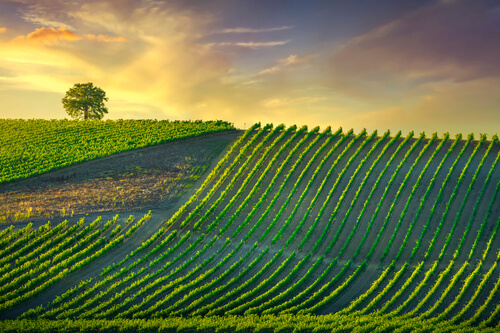 Chianti’s wine making history goes back centuries. As early as the 16th century the region was exporting wine to England. But in 1716, Cosimo III (Grand Duke of Tuscany), officially delimited the production zone of Chianti wine. This act is widely acknowledged to be the first legislation ever passed to govern wine production. These 18th century boundaries and rules still apply to Chianti wine production today. However, these days they are overseen by the Chianti Wine Consortium which was established in 1927 and, in fact, have been slightly expanded since 1932 beyond the first few original hills.
Chianti’s wine making history goes back centuries. As early as the 16th century the region was exporting wine to England. But in 1716, Cosimo III (Grand Duke of Tuscany), officially delimited the production zone of Chianti wine. This act is widely acknowledged to be the first legislation ever passed to govern wine production. These 18th century boundaries and rules still apply to Chianti wine production today. However, these days they are overseen by the Chianti Wine Consortium which was established in 1927 and, in fact, have been slightly expanded since 1932 beyond the first few original hills.
Towns and villages of Chianti
There are five ‘in Chianti’ Tuscan villages. These are Greve in Chianti, Panzano in Chianti, Gaiole in Chianti, Castellina in Chianti and Radda in Chianti. The latter is the perfect example of a Chianti town. Visitors can still see the huge 13th century defensive walls that were originally built to defend Florentine interests in the Chianti hills. Likewise, it is possible to see how buildings once used as castles and fortifications have since been transformed into villas and homes following the defeat of Siena. Like so many Chianti towns and villages, it’s fairly small but don’t let that put you off! Size isn’t everything! Like so many of Chianti’s villages, it is utterly charming and the 360 degree views it enjoys are worth the visit alone.
There are plenty of other towns and villages that also fall within the Chianti region of Tuscany. Some of our favourites include Barberino Tavernelle, Poggibonsi, San Casciano in Val di Pesa and Castelnuovo Berardenga. Further examples include Monteriggioni, Montefioralle, Rufina, Montalbano and Monterspertoli but there are numerous others. Find out more in our guide to Tuscany’s borghi piu belli and our A to Z guide to the towns and villages in Tuscany.
What to do in the Chianti region
For us, driving through the Chianti countryside is pretty perfect way to spend a day in what is often affectionately referred to as Chiantishire. This is some of the most beautiful scenery anywhere in Italy. The main wine road which we recommend you take is the SS222 or Chiantigiana. This has some incredible vistas to be enjoyed. Stop at the small hilltop towns and villages as you pass and just soak up the atmosphere.
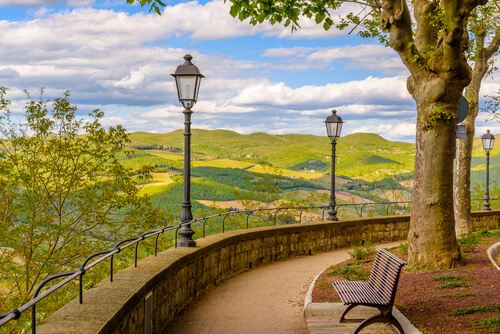 Of course, no visit to the Chianti region would be complete without enjoying a wine tasting or winery visit. Chianti wines are red wines made using the Sangiovese grape. However, all Chianti wines are not the same, so here’s a simple guide to what’s what.
Of course, no visit to the Chianti region would be complete without enjoying a wine tasting or winery visit. Chianti wines are red wines made using the Sangiovese grape. However, all Chianti wines are not the same, so here’s a simple guide to what’s what.
Those bottles labelled simply as Chianti will have been made with grapes grown on the valley floor – these tend to produce a lighter and fruitier style of wine.
In contrast, Chianti Classico wines will have been made from grapes grown on the best hillsides in the original heart of the Chianti region. Just to give you a feel for the scale of wine production here, the Chianti Classico region covers an area of around 170,000 acres and boasts more than 130 wineries which officially welcome visitors. These wines also contain a higher percentage of Sangiovese grapes (at least 80% versus 70% for Chianti wines) and will have a higher alcohol content (minimum 12% versus minimum 10% with Chianti wines).
And finally you have bottles labelled Riserva. These wines will have been aged for longer in barrels before being bottled, which in theory ensures a higher quality product. In fact, to be given Riserva status, they have to have been aged for at least 24 months from the date of harvest with at least 3 months in the bottle before being sold. And those marked as Superiore will be more concentrated and made from lower yields.
Whatever you want to sample, you will have the choice between enjoying a wine tasting at a small, traditional, family run winery or a larger, contemporary setting such as the Antinori winery offers.
However, it’s not just wines on offer in Chianti. The region is also famous for its olive oil, Over 400,000 olive trees are grown in this area to produce extra virgin olive oil. Enjoy an olive oil tasting accompanied by some delicious local meats, cheeses and bread to soak it all up.
And, of course, you can use Chianti as a base to explore the rest of Tuscany too. Enjoy our guide to the top 60 things to do in Tuscany for added inspiration on what to see and do during your stay.
What to eat in Chianti
Everyone knows what to drink when in Chianti, but there is also plenty of delicious food you can enjoy to soak up the wine! Vegetarians beware though! This area is definitely meat heavy. The bistecca alla fiorentina is a large T-bone steak which has to be tried. Just as delicious are the cured meats and salami.
When to visit Chianti
Our favourite time to visit Chiantishire is in the Spring or early Autumn. This is when you will find the villages that little bit quieter and the crowds a little less. Springtime is also when the area is filled with wild flowers. And Autumn is when the vineyards are filled with colour. Both seasons are also filled with numerous festivals and sagra to enjoy too. In May there is the Cantine Aperte, an open wine cellar event, whilst in September and October there are a number of events celebrating the harvest.
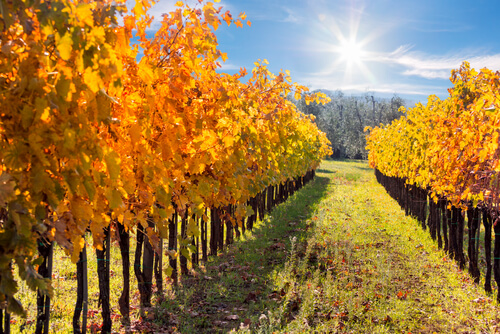 If you decide to visit across the Winter months, don’t be surprised if some shops and businesses are closed. However, whilst daytime temperatures may be cooler across the Winter, you can still expect plenty of sunshine.
If you decide to visit across the Winter months, don’t be surprised if some shops and businesses are closed. However, whilst daytime temperatures may be cooler across the Winter, you can still expect plenty of sunshine.
In the Summer, you can enjoy plenty of hot, sunny days. Daytime temperatures can easily rise to 30℃ so it’s time to relax poolside at your Tuscany villa. When you are out and about, just be prepared for the streets of Chianti’s hilltop villages to be busy with other holidaymakers.









